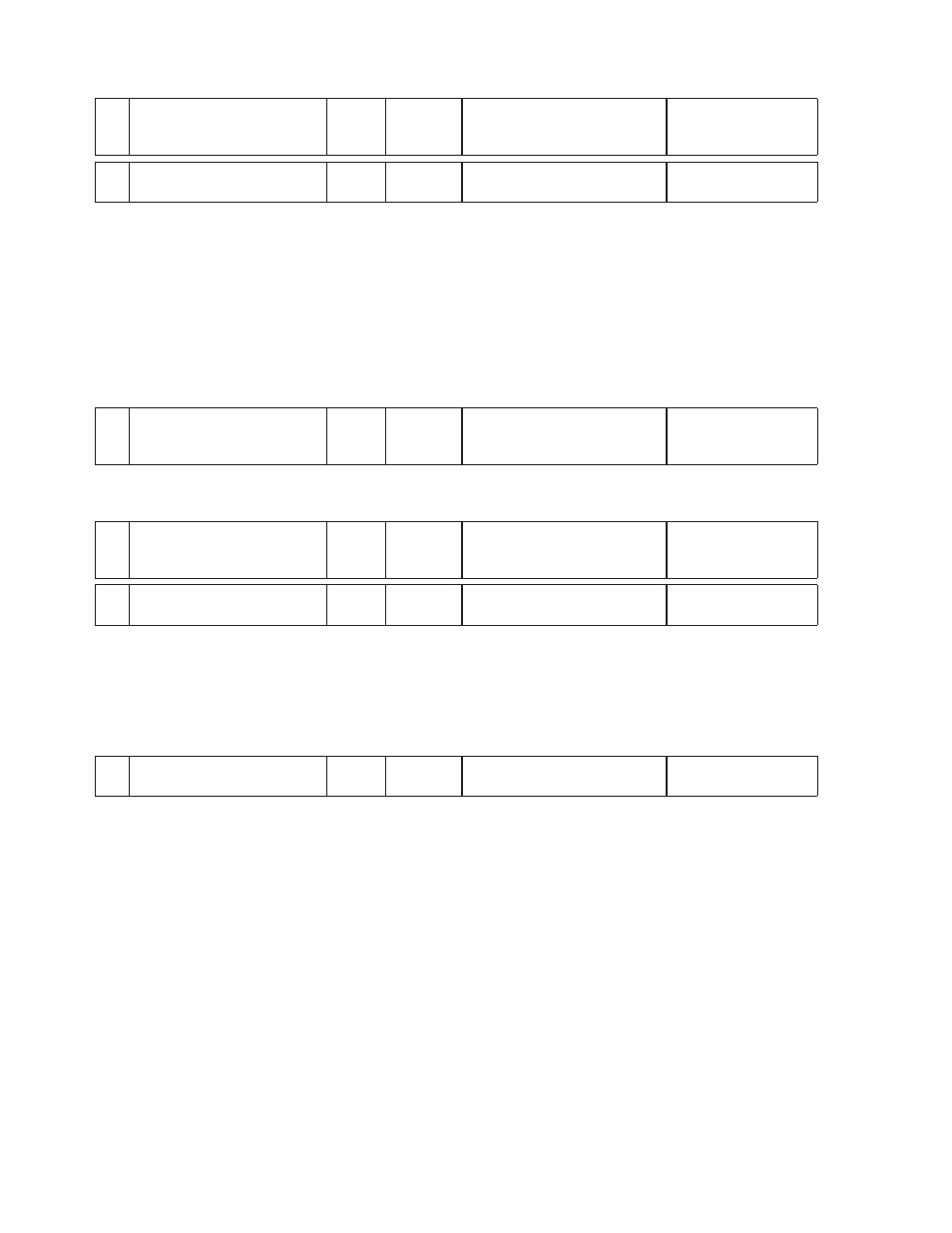Applied Motion RS-232 User Manual
Page 230

230
920-0002 Rev. I
2/2013
Host Command Reference
c
Current Command (IC)
051
Short
Servo: 0.01 amps RMS
Stepper: 0.01 amps, peak-of-
sine
All drives
d
Relative Distance (ID)
052
Long
Servo: encoder counts
Stepper: steps
All drives
BLu, STAC6
The “d” register (as well as the ID command) contains the relative move distance used in the last move.
This means that the “d” register is only updated at the end of every relative move.
SV, ST-Q/Si, ST-S, STM
The “d” register (as well as the ID command) contains the immediate relative distance moved since the
start of the last or current relative move. This means the “d” register is updated during relative moves and
can therefore be polled during a move to see where the motor is with respect to the overall relative move
distance.
e
Encoder Position (IE, EP)
053
Long
encoder counts
Servo drives and
stepper drives with
encoders
The “e” register can be zeroed by sending the command EP0.
f
Alarm Code (AL)
054
Long
hexadecimal equivalent of
binary Alarm Code word
(See AL command for details)
All drives
g
Sensor Position
055
Short
Servo: encoder counts
Stepper: steps
All drives
The “g” register contains the absolute position of the point at which the input condition is met during moves
like FS, FE, SH, and other “sensor-type” moves. It is common practice to use the EP and SP commands
to establish known absolute positions within an application or program, which will make the value of the “g”
register most meaningful. Otherwise, the absolute position of the motor is zeroed at every power-up of the
drive.
h
Condition Code
056
Short
decimal equivalent of binary
word (see below)
Q drives only
The response to the “RLh” command will be the decimal equivalent of the condition code’s binary word. Bit
assignments and examples are shown below.
Description
Bit #
Decimal Value
TRUE (non-zero)
0
1
FALSE (zero)
1
2
POSITIVE 2
4
NEGATIVE 3
8
GREATER THAN
4
16
LESS THAN
5
32
EQUAL TO
6
64
UNEQUAL TO
7
128
